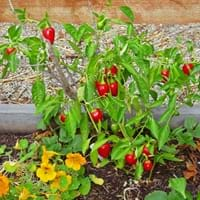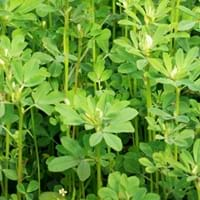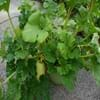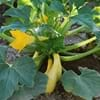Type
Vegetable
Fruit, Vegetable
Origin
Mexico, Central America, South America
Mediterranean, Middle East
Types
Not Available
Not Available
Habitat
Open areas
Fields, Grassland, Hillside
USDA Hardiness Zone
Not Available
5-9
AHS Heat Zone
12-1
Not Available
Sunset Zone
A1, A2, A3, H1, H2, 1a, 1b, 2a, 2b, 3a, 3b, 4, 5, 6, 7, 8, 9, 10, 11, 12, 13, 14, 15, 16, 17, 18, 19, 20, 21, 22, 23, 24
Not Available
Habit
Upright/Erect
Narrow Upright/Fastigiate
Flower Color Modifier
Bicolor
Bicolor
Fruit Color
Red, Green
Yellow
Leaf Color in Spring
Dark Green
Green
Leaf Color in Summer
Green
Green
Leaf Color in Fall
Green, Black
Green, Light Green, Light Yellow
Leaf Color in Winter
Dark Green
Light Green
Leaf Shape
Ovate
oblong or obovate
Plant Season
Spring, Summer, Fall
Spring, Fall
Sunlight
Full Sun
Full Sun
Growth Rate
Medium
Medium
Type of Soil
Loam, Sand
Clay, Loam, Sand
The pH of Soil
Neutral
Acidic, Neutral
Soil Drainage
Well drained
Well drained
Bloom Time
Spring, Summer, Indeterminate
Early Spring, Spring
Tolerances
Drought
Drought
Where to Plant?
Container, Ground
Container, Ground, Pot
How to Plant?
Seedlings, Transplanting
Seedlings
Plant Maintenance
Medium
Medium
Watering Requirements
Do Not over Water
Keep the Soil well drained, Needs a lot of water initially
In Summer
Lots of watering
Lots of watering
In Spring
Moderate
Moderate
In Winter
Average Water
Average Water
Soil pH
Neutral
Acidic, Neutral
Soil Type
Loam, Sand
Clay, Loamy, Sandy
Soil Drainage Capacity
Well drained
Well drained
Sun Exposure
Full Sun
Full Sun, Partial Sun, Partial shade
Pruning
Remove damaged leaves, Remove dead branches, Remove dead leaves
Remove damaged leaves, Remove dead branches, Remove dead leaves
Fertilizers
All-Purpose Liquid Fertilizer
All-Purpose Liquid Fertilizer
Pests and Diseases
Not Available
Aphids, Cercospora leaf spot, Charcoal rot, fungus, Red blotch
Plant Tolerance
Drought
Drought
Flower Petal Number
Single
Single
Foliage Texture
Medium
Medium
Foliage Sheen
Glossy
Matte
Attracts
Not Available
Aphids, Leafminer
Allergy
Hives, Rash
Avoid during Pregnancy, Chest Pain, Diarrhea, Skin irritation
Aesthetic Uses
Showy Purposes
Not Used For Aesthetic Purpose
Beauty Benefits
Not Available
Acne, Anti-ageing, Moisturizing, Removes dandruff
Environmental Uses
Air purification
Air purification
Medicinal Uses
cholesterol-lowering, Low calories, Vitamin C
Manganese, Potassium, Vitamin A, Vitamin B, Vitamin C
Part of Plant Used
Fruits
Leaves, Stem
Other Uses
Used As Food
Food for animals, Used as a nutritious food item, Used for its medicinal properties
Used As Indoor Plant
No
Yes
Used As Outdoor Plant
Yes
Yes
Garden Design
Bedding Plant, Container, Edible, Herb / Vegetable, Mixed Border, Tropical
Edible, Herb / Vegetable, Vegetable
Botanical Name
CAPSICUM annuum 'Cherry Bomb'
Trigonella foenum-graecum
Common Name
Cherry Bomb Pepper, Cherry Pepper
Fenugreek
In Hindi
Cherry Bomb Pepper
मेंथी
In German
Cherry Bomb Pfeffer
Bockshornklee
In French
Cherry Bomb Pepper
Fenugrec
In Spanish
Bomba de cereza Pimienta
Fenogreco
In Greek
Cherry Bomb Πιπέρι
Τριγωνέλλα
In Portuguese
Cherry Bomb Pimenta
fenacho
In Polish
Cherry Bomb Pepper
Kozieradka
In Latin
Cherry Bomb Pepper
Graecum
Phylum
Anthophyta
Magnoliophyta
Class
Eudicotyledones
Magnoliopsida
Family
Solanaceae
Fabaceae
Genus
Capsicum
Trigonella
Clade
Angiosperms
Angiosperms, Eudicots, Rosids
Tribe
Not Available
Trifolieae
Subfamily
Not Available
Faboideae
Number of Species
Not Available
Season and Care of Cherry Bomb Pepper and Fenugreek
Season and care of Cherry Bomb Pepper and Fenugreek is important to know. While considering everything about Cherry Bomb Pepper and Fenugreek Care, growing season is an essential factor. Cherry Bomb Pepper season is Spring, Summer and Fall and Fenugreek season is Spring, Summer and Fall. The type of soil for Cherry Bomb Pepper is Loam, Sand and for Fenugreek is Clay, Loam, Sand while the PH of soil for Cherry Bomb Pepper is Neutral and for Fenugreek is Acidic, Neutral.
Cherry Bomb Pepper and Fenugreek Physical Information
Cherry Bomb Pepper and Fenugreek physical information is very important for comparison. Cherry Bomb Pepper height is 61.00 cm and width 61.00 cm whereas Fenugreek height is 30.00 cm and width 30.00 cm. The color specification of Cherry Bomb Pepper and Fenugreek are as follows:
Cherry Bomb Pepper flower color: White
Cherry Bomb Pepper leaf color: Dark Green
Fenugreek flower color: White
- Fenugreek leaf color: Green
Care of Cherry Bomb Pepper and Fenugreek
Care of Cherry Bomb Pepper and Fenugreek include pruning, fertilizers, watering etc. Cherry Bomb Pepper pruning is done Remove damaged leaves, Remove dead branches and Remove dead leaves and Fenugreek pruning is done Remove damaged leaves, Remove dead branches and Remove dead leaves. In summer Cherry Bomb Pepper needs Lots of watering and in winter, it needs Average Water. Whereas, in summer Fenugreek needs Lots of watering and in winter, it needs Average Water.





